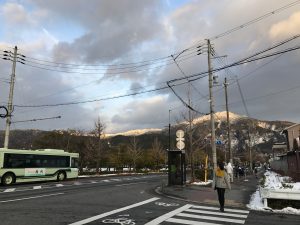It’s hard to believe we have finished all artisan visits with today and have only two days in Kyoto remaining! The time has flown by so quickly. Today we were again free to explore on our own until the afternoon, and I was again with Louisa and Carl.
Carl had been long wanting to go to Kyimizudera (quite literally, “pure water temple”), so we headed there in the morning. We decided to walk there from the hostel, since this would mean walking through the famed and historic Gion area. When we were walking down a very old, traditional-looking street, so many tourists were crowding the area and taking many photos. We were confused as to what exactly was going on, but we later discovered this was the street that many famous shops and perhaps even geishas were.
We meandered our way towards Kiyomizudera, my pocket wi-fi low on battery. At first I freaked out that we might be walking around without any wifi connection in case we became lost, but having no internet connection meant being more resourceful, asking people for directions, and paying attention to our surroundings much more! We found streets that wound their way toward the stop of the mountain, lined with little shops.
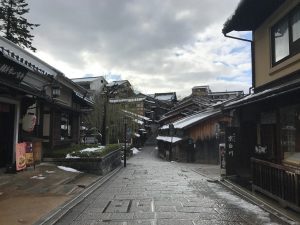
I was shocked to see so many tourists at the top of the mountain — I don’t know why I am so continually shocked to see places packed with tourists, but I am! The temple itself was so beautiful, and I fell in love with the view.
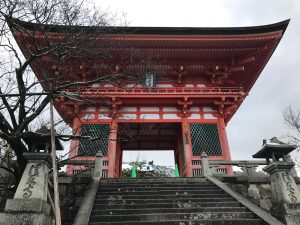
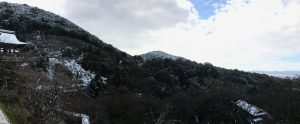
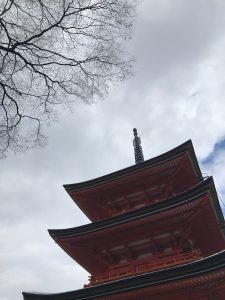

We spent some time at the temple, enjoying the view and walking through the grounds. Since Louisa and I have been growing our love of moss, ferns, and the various things we have commonly sighted on our adventures, we even created a little game that involved our own created hand motions and positions that represent things like moss and ferns — yes, we saw much moss today! It’s a little silly, but it’s pretty fun.
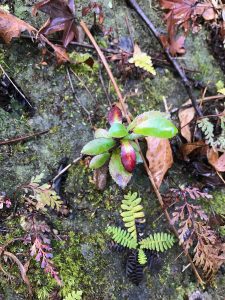
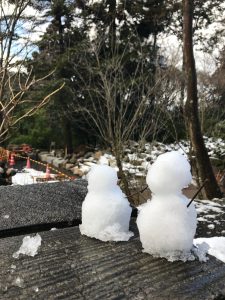
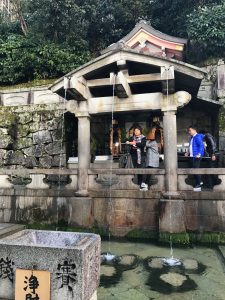
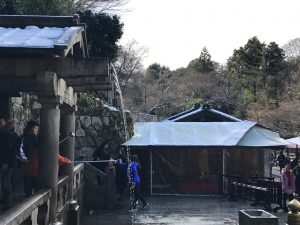

We then hurried down to have lunch at one of the shops on the way down — which was very delicious and was based around a theme of health! — and made our way to the meeting spot for the afternoon.
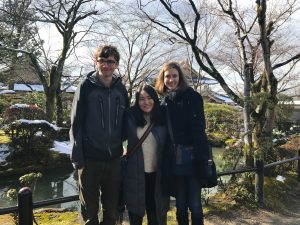
United as a whole class, we visited Mr. Tatsushige Udaka, the son of a famous Noh performer and mask maker, and a famed performer himself. He is a shite performer, or a main character performer. In fact, Mr. Udaka had to rush off to perform after speaking with us! Wow, the true life of a professional performer! This was an amazing experience, and I loved listening to the way he spoke about Noh — full of passion, but also invested in making it understandable to us. Diego was there with us and served as a translator, and I really appreciated the way he worked with Mr. Udaka and translated for us! Seeing the two of them talk about Noh together made it seem much more accessible!

The various steps of creating a Noh mask, from right to left.
The masks are made of wood, carved, painted with a mix of ground sea shells and animal collagen (or a type of animal glue), painted to add shadows, and then painted for facial features. The mask is weak to water, so the performers have a special way of taking off the masks, which can be seen in one of the videos below. One of the most amazing things about the masks are the way some of them work with angles and shadows. By tilting the mask a certain way, it can display a range of emotions, and I found this to be extremely incredible and beyond artistic!
I especially appreciated the way Mr. Udaka explained the use of masks to us, as I didn’t fully understand it before. He asked us if we felt a little different, perhaps a little cooler when we wore sunglasses or if we feel and act different when we use a username on the internet. In a similar manner, Noh masks might slightly alter the way an actor is feeling!
I also loved hearing about the use of yin/yang in Noh, and it seems to be a common theme running throughout many of the artisans’ work in Kyoto. The strong belief in such balance, especially in how Mr. Udaka used imbalance in yin/yang to explain the play we had seen, Ikkaku Sennin, was extremely helpful for my own understanding of Noh as an art form. It also inspired me to look into the concept more, as I am very interested in it now!
I also loved hearing about the costumes and learning about how the costumes and masks work together to make the character, and the actor must use their body and skill to fit into and accommodate that character, not embody it per se. It was a difficult concept for me to understand previously, but when Mr. Udaka explained it, it all fit together so perfectly! I feel very lucky to have had such an experience!
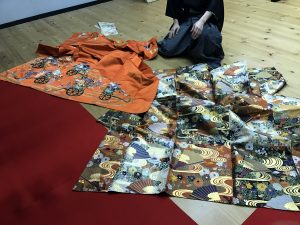
Two types of costumes Mr. Udaka showed us. Both are for female characters.
Finally, Mr. Udaka showed us some dance movements so that we could understand how abstract movements show certain things happening, but are also open to interpretations, which makes Noh transcendent of any generational or contextual moments. I find this concept to be very beautiful and moving, as well as inspirational.
I absolutely loved today and am deeply saddened that we only have two more days in this beautiful and historical city! I really do wish to return some day to further explore these artistic and cultural topics as well as explore more historical sights!
